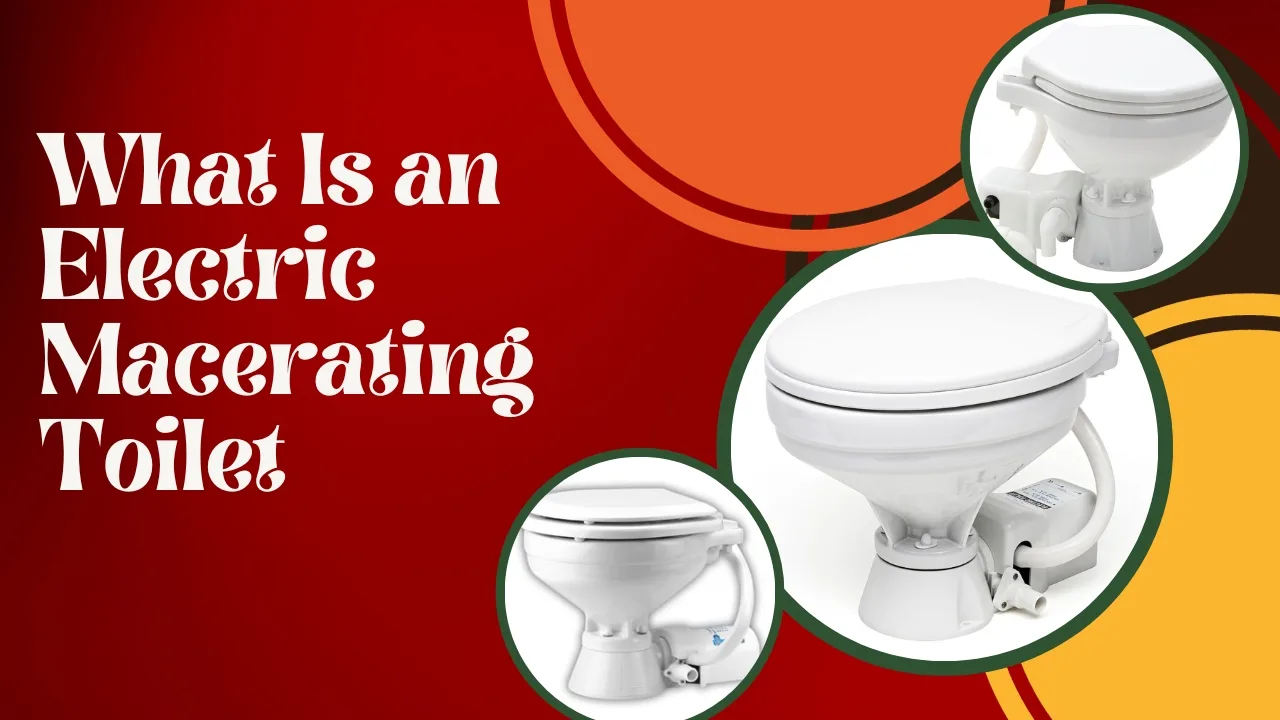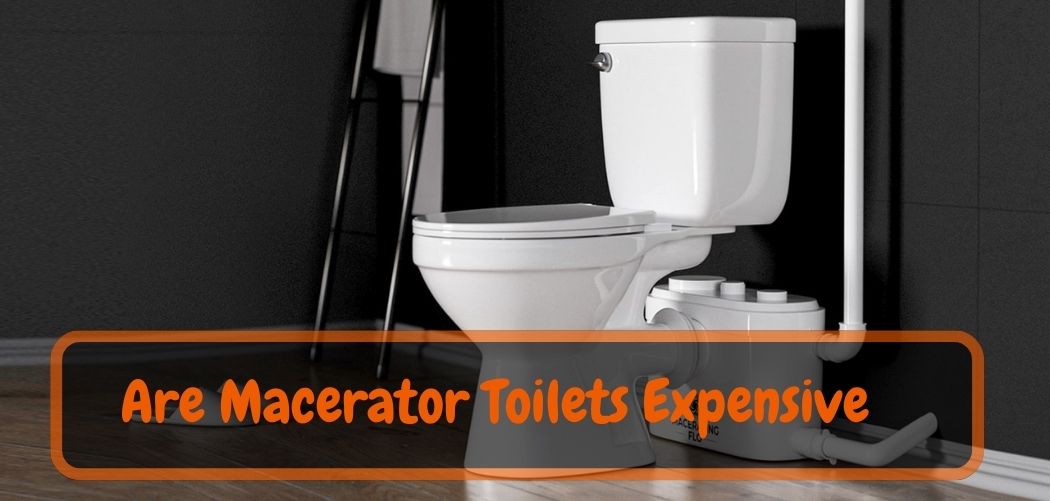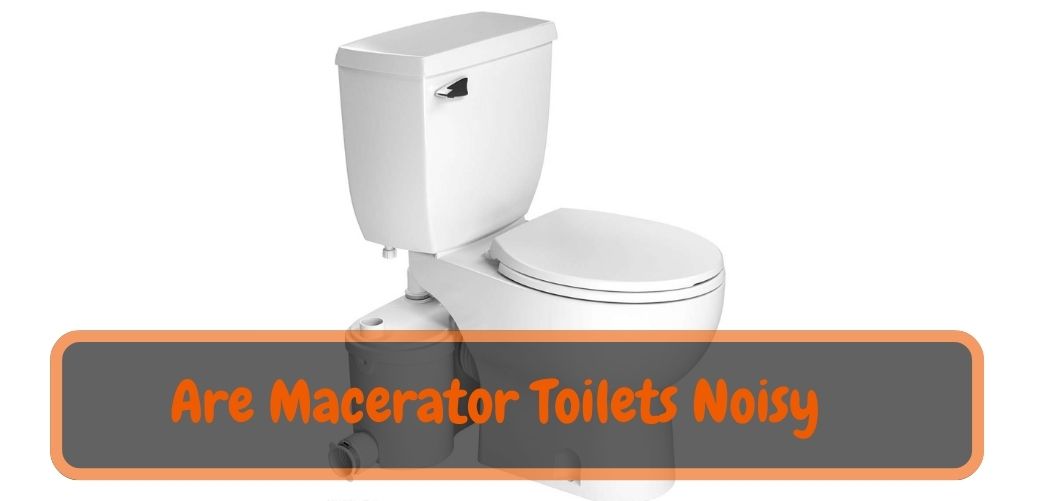An electric macerating toilet is a type of toilet that uses an electric motor to break down waste and toilet paper before it is pumped away from the toilet. It is a useful option for people who want to install a toilet where there is no existing sewer line.
This type of toilet is commonly used in boats, rvs, and in basement bathrooms where it is difficult to get the waste to the main sewer line. The toilet uses an electric motor to chop up the waste and toilet paper into small pieces, which are then pumped into a holding tank or directly into the sewer line.
This type of toilet is easy to install, and it provides a convenient solution for people who want to add a toilet to a space that doesn’t have a sewer line.
How Does a Macerating Toilet Work?
A macerating toilet, also known as a macerator toilet, is a type of toilet system that uses a macerator pump to break down waste and toilet paper into a slurry before pumping it into the sewage or drainage system.
This type of toilet is often used in locations where a traditional gravity-based sewage system is not practical, such as in basements or locations below the main sewage line.
Here’s how a macerating toilet typically works:
1. Flushing: When you flush the toilet, the waste and water enter a grinding mechanism within the macerating unit.
2. Macerating Unit: The macerating unit contains a powerful rotating blade or grinder. This grinder chops up the waste and toilet paper into a fine slurry, making it easier to pump and transport.
3. Pumping: The macerator pump then pumps the slurry through a discharge pipe. This pipe may go vertically or horizontally to connect with the main sewage or drainage line.
4. Disposal: The slurry is pumped into the existing plumbing system, where it can then be transported to the main sewer or septic tank.
Benefits of a macerating toilet include flexibility in installation (as it can be installed below the main sewer line), the ability to add a toilet in locations where a traditional toilet wouldn’t be feasible, and reduced plumbing complexity.
It's important to follow the manufacturer's instructions for installation, maintenance, and usage to ensure the macerating toilet functions effectively and efficiently.
Also Read: What The Benefits Of A Macerator Toilet: Unveiling Advantages of Macerator Toilets!
Do Macerator Toilets Use Electricity?
Yes, macerating toilets typically use electricity to power the macerator pump and any other electronic components they may have.
The macerator pump, which is a critical part of the system that grinds waste into a slurry for easier disposal, requires electrical power to function.
This pump is responsible for breaking down waste and toilet paper before pumping it into the sewage or drainage system.
The electrical power allows the macerator toilet to efficiently process waste and move the slurry through the discharge pipe into the existing plumbing system.
It’s important to ensure that the macerating toilet is properly connected to an electrical power source and that the electrical components are functioning correctly to ensure the toilet operates as intended.
The difference between a macerator toilet and a regular toilet:
Here’s simple table about “The key differences between a macerator toilet and a regular toilet:
| Aspect | Macerator Toilet | Regular Toilet |
|---|---|---|
| Waste Disposal | Breaks down waste into a slurry using a macerator pump, making it easier to transport. | Relies on gravity for waste disposal into the sewage system or septic tank. |
| Installation Flexibility | Allows installation in locations below the main sewer line or where traditional plumbing is challenging. | Requires a connection to the existing gravity-based sewage system. |
| Ease of Installation | Easier to install due to the flexibility in plumbing connections and the ability to pump waste vertically or horizontally. | Installation may be more complex, especially in locations with limited access to the sewage system. |
| Power Source | Requires electricity to power the macerator pump for waste grinding and pumping. | Operates without the need for electricity, relying on gravity for waste flow. |
| Water Usage | May use less water per flush, contributing to water efficiency. | Water usage per flush can vary but typically relies on a standard amount of water for flushing. |
| Cost | Generally higher initial cost due to the inclusion of a macerator pump and associated components. | Usually has a lower initial cost since it’s a standard plumbing fixture without additional mechanical components. |
| Maintenance | Requires occasional maintenance of the macerator pump and electrical components. | Standard maintenance involves addressing common toilet issues like clogs or flushing mechanisms. |
| Noise Level | Can be louder due to the operation of the macerator pump during waste grinding and pumping. | Tends to be quieter during flushing, with noise limited to the water filling and flushing action. |
Keep in mind that individual models and brands of macerator and regular toilets may have variations in these aspects. Always refer to the specific product specifications for accurate information.
Also Read: Difference Between a Macerating Toilet and Regular Toilet
Why Would You Need a Macerating Toilet?
Macerating toilets are useful in specific situations where a conventional gravity-based plumbing system is impractical or too costly to install. Here are some common reasons why someone might opt for a macerating toilet:
1. Below-Grade Installations:
Macerating toilets are often used in basements, below-ground bathrooms, or other areas where it’s difficult or expensive to install conventional plumbing and connect to the main sewage line. The macerator pump allows waste to be pumped uphill and/or horizontally to reach the main sewer line.
2. Home Renovations or Additions:
When renovating or adding a bathroom to a home, a macerating toilet provides an efficient way to add plumbing without significant structural alterations. This can save time, money, and disruption to the existing building.
3. Remote or Rural Locations:
In remote or rural areas where connecting to a central sewage system is not feasible, macerating toilets provide an option to efficiently manage waste without the need for a traditional septic system.
4. Converting Spaces into Bathrooms:
When converting a space like a closet, garage, or storage area into a bathroom, a macerating toilet can be an effective choice due to its flexibility in plumbing connections.
5. Historical or Older Buildings:
In older or historical buildings where the existing plumbing is outdated or insufficient, installing a macerating toilet can be a viable solution without major renovations.
6. Reduced Water Usage:
Some macerating toilets are designe to use less water per flush compared to traditional toilets, making them a more eco-friendly choice.
7. Temporary Installations:
For temporary events, construction sites, or portable restroom setups, macerating toilets can provide a convenient and temporary sanitary solution.
Overall, macerating toilets offer a versatile and practical solution in various situations where traditional plumbing installations may not be practical, providing flexibility and ease of installation.
Also Read: Can You Put Toilet Paper in a Macerator: A Guide to Toilet Paper Use!
FAQs: Electric Macerating Toilet:
Q1. What is an Electric Toilet?
An electric toilet is a toilet that utilizes electricity to power various functions such as flushing, bidet features, seat warming, and sometimes even a macerator pump for waste disposal. These toilets offer automated and enhanced features compared to traditional, manual toilets.
Q2. What Are Common Macerator Toilet Problems?
Some common macerator toilet problems include clogs due to improper waste disposal, issues with the macerator pump such as jamming or failure, unpleasant odors, and problems with the electrical components that power the macerator.
Q3. How Does a Macerator Toilet Work on a Boat?
A macerator toilet on a boat functions by using a macerator pump to break down waste and toilet paper into a slurry. This slurry is then pumpe into a holding tank or directly into the water, depending on the boat’s sanitation system.
Q4. What is an Electric Marine Toilet with Macerator?
An electric marine toilet with a macerator is a toilet designe for use on boats. It incorporates both electric flushing and a macerator pump to break down waste into a slurry for easier disposal into the boat’s holding tank or directly into the water.
Q5. What is a Saniflo 12V Toilet?
A Saniflo 12V toilet is a type of macerator toilet Saniflo, a brand known for its macerating and upflush toilet systems. The “12V” signifies that the toilet operates on a 12-volt electrical system.
Q6. How Does an Electric Toilet Work in the UK?
An electric toilet in the UK operates similarly to electric toilets elsewhere, utilizing electricity to power flushing mechanisms, bidet features, seat warming, and other automated functions. These toilets are often designe to meet the plumbing and electrical standards specific to the UK.
Q7. What are Leesan Toilets?
Leesan is a brand know for its marine and leisure industry products, including marine toilets. Leesan toilets are designe for use in boats, caravans, motorhomes, and other leisure vehicles, often incorporating macerator technology for efficient waste disposal.
Q8. What is a Smart Toilet?
A smart toilet is a technologically advance toilet that often includes features like automatic flushing, bidet functionality, heate seats, air drying, self-cleaning functions, and sometimes integration with smart home systems. These toilets offer a higher level of convenience and customization for users.
Closing Reminder:
An electric macerating toilet is a modern plumbing innovation that combines the power of electricity with efficient waste disposal. Unlike traditional toilets, it utilizes a macerator pump powered by electricity to grind waste and toilet paper into a slurry before easily pumping it through plumbing.
This innovation is particularly useful in scenarios where standard plumbing is challenging or expensive, making it a versatile and convenient solution for locations below the main sewer line or in remote areas.
The combination of electric and macerating technologies ensures effective waste management and allows for flexible installation, making it an efficient choice for various settings.










